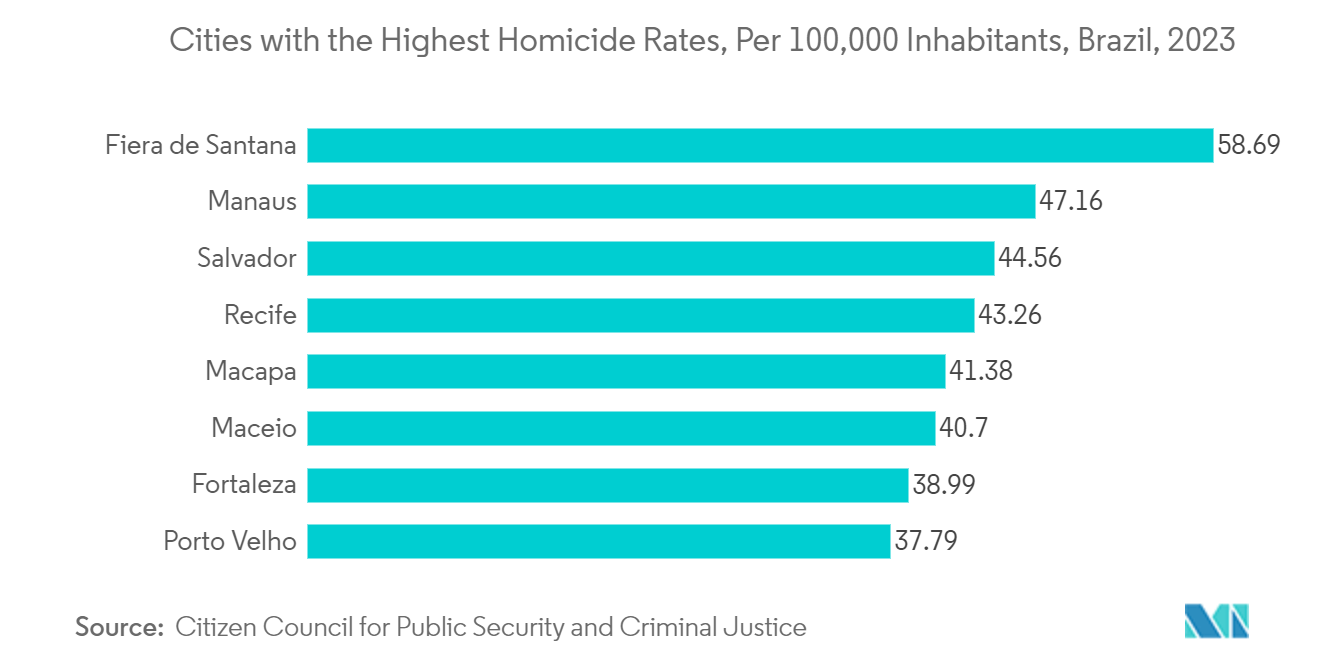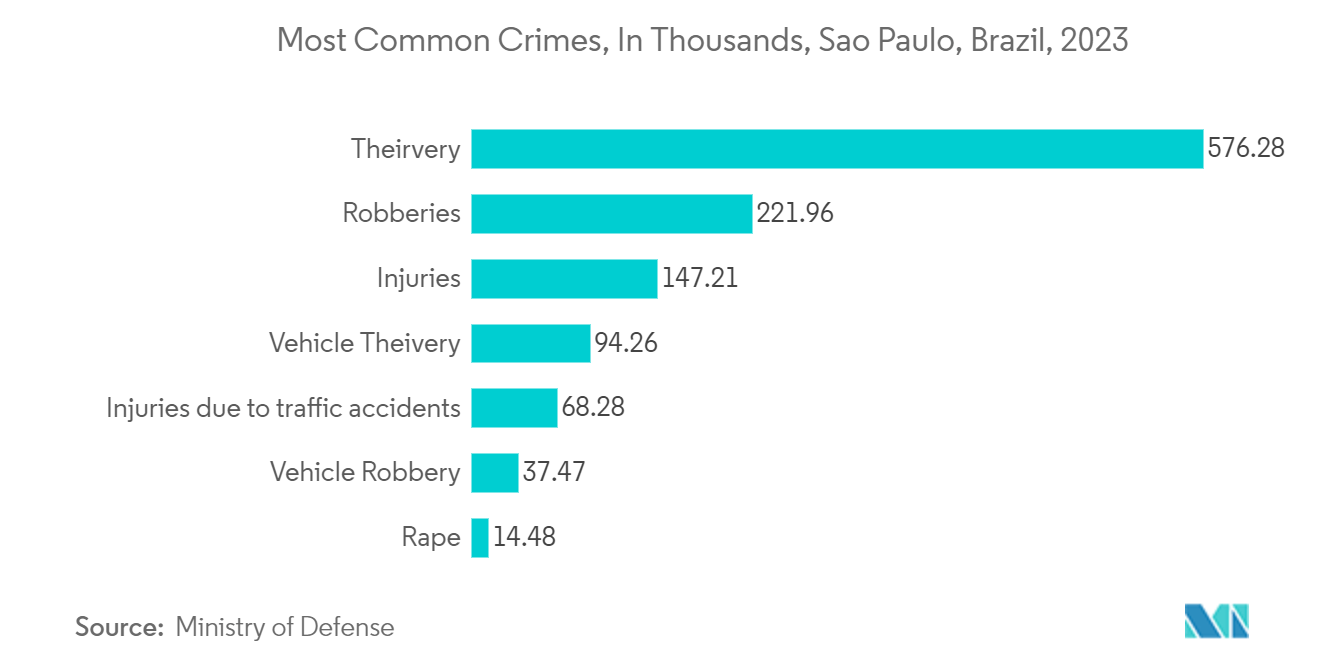Market Trends of Brazil Surveillance IP Cameras Industry
Higher Crime Rates and Growing Consumer Awareness Driving the Market
- As consumers and businesses become more aware of security risks and the advantages of surveillance systems, adoption rates continue to rise. The plummeting costs of IP cameras are broadening their appeal, making them accessible not just to large enterprises but also to small businesses and residential users. Furthermore, e-commerce platforms like Mercado and Amazon are making it easier for consumers to access and purchase these cameras, further fueling market expansion.
- There are approximately 30 million MSMEs in Brazil that are becoming increasingly aware of security due to the high rate of crimes, robberies, etc. Rapid urbanization, which was approximately 87.79% in 2023, and the development of new residential and commercial properties create opportunities for deploying modern surveillance.
- The growing adoption of smart home technologies is driving the demand for IP cameras, which offer remote monitoring and control through smart home platforms. Retailers are investing in IP cameras to prevent theft, monitor customer behavior, and ensure the safety of staff and customers. According to data gathered by CNC, the total number of stores, including electronics, supermarkets, wholesalers, and fashion retailers, reached 2.5 million in 2023, representing a growth rate of 8.1% compared to 2022.
- Despite a slowdown in crime rates, the cities in the country still grapple with crimes. Notably, cities like Feira de Santana, Manaus, Salvador, Recife, and Macapa report homicide rates exceeding 40 per 100,000 inhabitants. In 2023, the northeast region of Brazil was home to seven of the ten cities with the highest homicide rates. Feira da Santana topped the list as Brazil's most violent city, recording a murder rate of 58.69 per 100,000 inhabitants.
- The market is driven by a combination of factors, such as stubborn crime rates, technological advancements, the rise of smart homes and commercial spaces, consumer awareness, and favorable economic conditions. As these factors continue to evolve, the demand for advanced IP surveillance systems is expected to grow, ensuring enhanced security and safety across various sectors in Brazil.

The Government Segment Witnessing Growth in Demand
- The Brazilian government is spearheading smart city initiatives, leveraging advanced technologies like IP cameras to enhance urban management. These surveillance cameras play a pivotal role in traffic management, monitoring public areas, and safeguarding residents. A prime example is the 2023 launch of the Smart Sampa Project, part of a broader suite of initiatives deploying modern surveillance techniques across various Brazilian states.
- The project is set to unveil a unified video surveillance platform, streamlining operations for emergency services, traffic management, the city's public transport, and police forces. By 2024, the plan is to install 20,000 new cameras, seamlessly integrating an equal number of third-party and private cameras into the network.
- These cameras are expected to oversee schools, medical facilities, and public areas like parks and squares. The integration of real-time analytics with facial recognition technology, powered by AI algorithms to detect and compare faces, aims to accelerate the identification of wanted criminals, stolen vehicles, missing individuals, and lost items while enhancing public transport management throughout the city.
- Thievery and robbery rank among the most prevalent crimes in Brazil. Data from the Ministry of Defense revealed that in 2023, Sao Paulo recorded 578,278 cases of theft and 221,955 instances of robbery. Concurrently, government expenditure on public infrastructure witnessed a consistent uptick, culminating in a notable USD 8.33 billion in 2023.
- Both federal and state governments are channeling significant budgets into public safety, bolstering the demand for surveillance IP cameras. Municipal governments are also making strides in local surveillance initiatives. For example, smaller cities and towns are increasingly adopting IP cameras to bolster community safety and oversee vital infrastructure.


